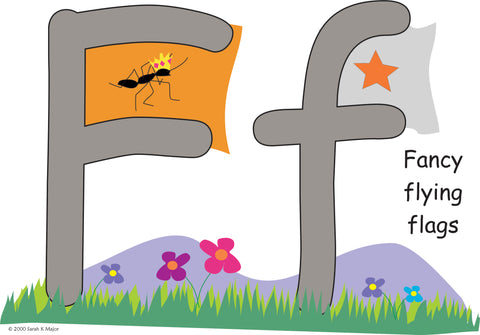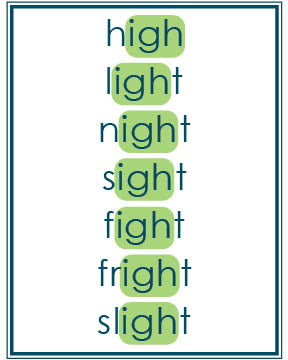Help! My Child is Struggling with Remembering Words!
I hear this on a regular basis, and I've had students with the same struggle. They labored so hard to sound out a word only to claim a few seconds later to have never seen the word before. In fact, this happened frequently enough with my own kindergartners back in the day that I finally decided there had to be a better way to approach teaching young kids to read. During those days I was like the little red hen observing, thinking, and working away to come up with helps for my students.
A few years later I was working as a support person in an inner city school with struggling readers and kindergarten classes. I visited classrooms to observe and help, but also pulled groups of kids out to work with in my room. Because the school population was at risk in many ways, it was my experience in that school that first convinced me that the strategies I’d been working on would truly work with children who might otherwise fail to learn to read.

Now, I wouldn’t dream of teaching young kids to read without, from the beginning, involving all the strategies I have found to work for the very young and for struggling readers. You can tell which strategies each particular child needs based on what they rely on as they are reading. For instance, if you see them unconsciously doing hand motions for the various sounds, you know they are kinesthetic learners who rely heavily on body movement for learning to read. If you see a child who “looks inside their head” for a second (calling up a visual) you can guess that they're a visual learner who relies on embedded visuals to learn and remember.
Simple Helps Make All the Difference
1. Stick with the familiar: Always relate every piece of learning to something familiar to the child. For example, if you are teaching letter sounds, you can find an unlimited amount of illustrated alphabets out there. But the illustration is not going to help your child unless the visual is the same shape as the letter. Some alphabets use a fish to illustrate the F because FISH starts with the F sound.
But look at the shape of this creature. Is there anything about it that would remind a child of the F and what it looks like? I doubt it. What if, instead, you used a FLAG to illustrate the F?

Now you have an image that is the same shape as the letter you want the child to recall. (See our Alphabet Collection if you want an alphabet with visuals that silhouette the letters).
2. Use body movement: Always have a body motion that mimics the learning piece. I am adamant about this because I've had students who learned to read using hand motions and then continued to use them as they read. Often, my students were unaware of the little hand movements they made as they read, hand movements that were movements they’d learned for the sounds in the words and for the words themselves. See this example of a hand motion for the sound of A:

3. Use stylized words: Always start with a stylized word. The aid that helped my students and those of many others recognize words on sight and quit trying to sound out every word they came to was SnapWords®. The debate about learning high-frequency words rages on. Some protest that learning sight words is a crutch. They say that once children are reading material more advanced than the Dolch sight words, or other sight word lists such as Fountas and Pinnell or Fry, they will suddenly hit a wall and not be able to read any longer.
But this has not been my experience at all. What I found when teaching my students using SnapWords® was that this practice just jump-started the reading process. Once kids had the bulk of the words they would encounter in reading under their belt, they could recognize them on sight, and they didn’t have much trouble learning the sound spellings contained in those words. They were then able to apply that knowledge across the board to new, more advanced words. I found that getting them started and successful was the key to future success.
Here is a perfect example about how SnapWords® work. I was teaching beginners, and because we used the stylized sight words (SnapWords®) they were going far beyond expectations for kindergarten. In fact, we were working on words with the OUGH spelling. OUGH is a hard sequence for the very young to remember unless you do body motions as you teach this spelling.
(Note the pattern that alternates in this sequence of letters: CIRCLE, BOWL, CIRCLE, UPSIDE-DOWN BOWL. Kids respond to this help.)

Anyway, what complicated this spelling sequence is that OUGH has several sounds; six to be exact. UF as in ROUGH and ENOUGH, OW as in DROUGHT, O (hot) as in THOUGHT, OH as in THOUGH, OFF as in COUGH, and OO as in THROUGH.

One day, one of my students suddenly read the word THROUGH. I was not aware that he’d learned this word, so I asked him, “How did you know that word said THROUGH?” His reply showed me what he relied on for correctly naming the word. “That is the word with the green snake crawling THROUGH the letters.” And his hand was making a snaky sort of motion to mimic the movement of the snake.
4. Use patterns in teaching: Always search for patterns. If I teach one word using the SnapWords® card, I don’t just teach that word in isolation. Instead, I choose many words that contain the same sound spelling so that the children will see that the sound spelling is a pattern they will continue to see everywhere. The most efficient way to teach is to rely on the fact that the brain LOVES patterns. I found that I could teach my Title 1 kids 25 words when their regular classroom was only teaching 10 words because I relied on the patterns in words. Once the children learned the sound spellings that were found in all the words they read, they suddenly “got it” and were able to catch up to their classmates.

Conclusion
The absolute worst approach for a child who is struggling to read is to ask them to just memorize something. The exceptions to the phonics rules in our language are daunting to children who are global, visual learners. They do far better seeing a spelling such as that OUGH spelling and then being shown, at one time, all the various ways you can pronounce this sound spelling.
If you have any questions, please contact us today!


My 7yr old daughter can’t remember the number she learned yesterday, and I’m concern,please how can I help my daughter
Leave a comment